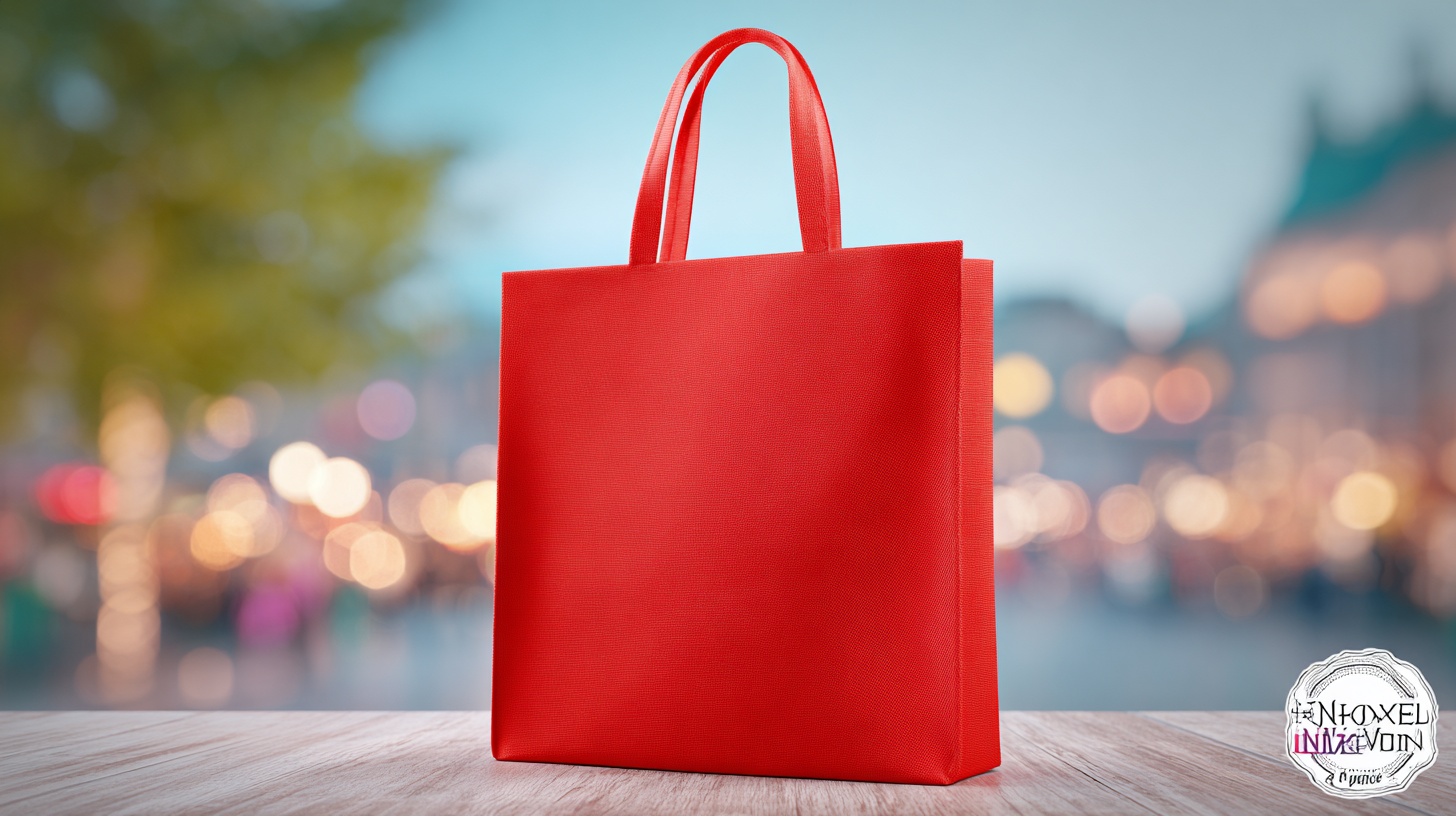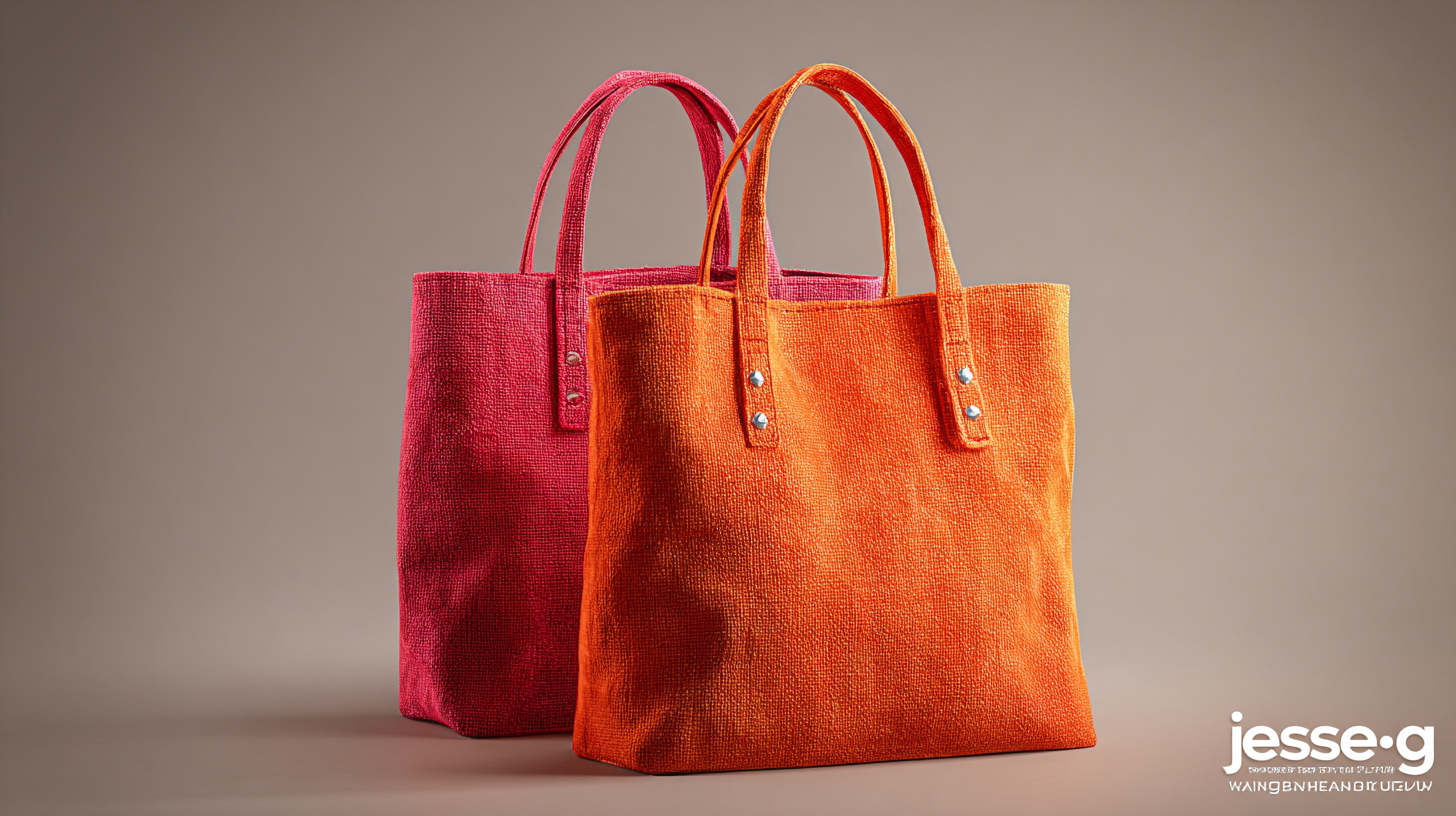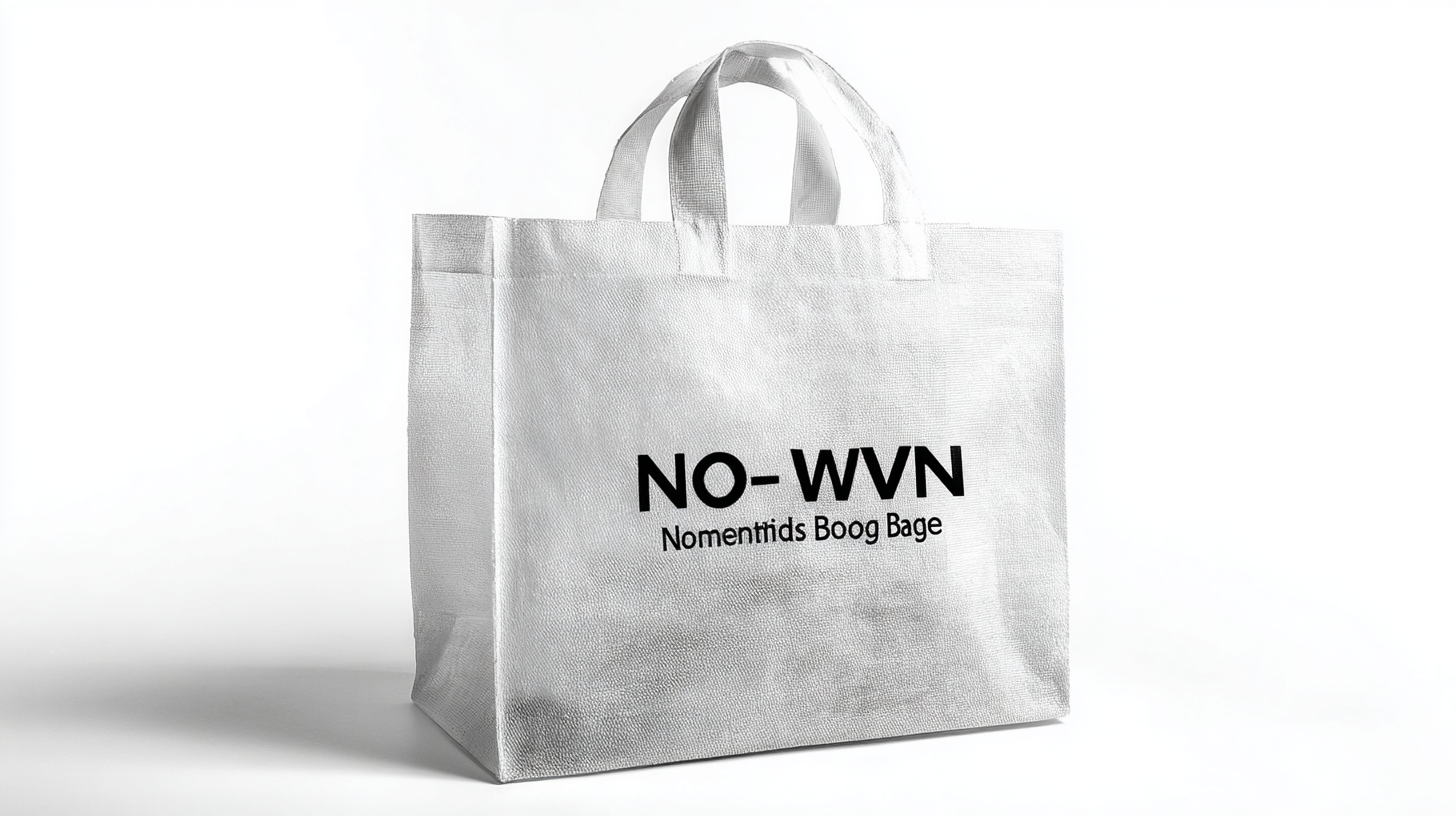
Unlocking the Benefits of Best Non Woven Bags with Detailed Technical Specs and Usage Guide
In recent years, the global market for non woven bags has witnessed remarkable growth, driven by increasing consumer demand for sustainable and eco-friendly packaging solutions. According to a report by Research and Markets, the non woven bag market is projected to reach USD 9.7 billion by 2025, growing at a CAGR of 5.5%. This surge is largely attributed to the rising awareness about environmental issues and the regulatory measures against single-use plastics. Non woven bags, made from spunbond or meltblown methods, not only offer durability and reusability but also a variety of designs suitable for different applications. As businesses and consumers alike prioritize sustainability, understanding the technical specifications and proper usage of non woven bags becomes paramount. In this blog, we will explore the benefits of these versatile bags and provide a comprehensive guide to help you make informed decisions in leveraging non woven bags for your needs.

Understanding Non Woven Bags: Material Properties and Advantages
Non woven bags have emerged as a popular eco-friendly alternative to traditional plastic bags, thanks to their unique material properties and numerous advantages. Made from polypropylene fibers, these bags are not only lightweight and durable but also possess a high resistance to tearing and puncturing. According to a report by Research and Markets, the global non woven fabric market is projected to reach $30 billion by 2026, highlighting the increasing demand for sustainable packaging options.

The advantages of non woven bags extend beyond their durability. They are reusable, allowing consumers to reduce their dependence on single-use plastics. Additionally, non woven bags are often biodegradable or recyclable, making them an environmentally sound choice. A recent study by the Textile Recycling Association indicates that over 60% of non woven bags can be recycled, contributing to a circular economy. With proper care, these bags can last for years, making them a cost-effective investment for both consumers and retailers alike.
Environmental Impact: Why Non Woven Bags Are a Sustainable Choice
In today's increasingly environmentally conscious world,
non woven bags have emerged as a
sustainable choice for consumers seeking to minimize their ecological footprint.
Made from recycled or bio-based materials, these bags are not only durable but also reusable,
making them a vital component in the effort to reduce single-use plastics.
Unlike traditional paper bags, which may seem eco-friendly at first glance, non woven bags often have a lower overall environmental impact when considering their full life cycle.
Research suggests that reusable plastics can even be more sustainable than paper or cotton options, particularly in regions where recycling systems are robust.
The rise of non woven bags indicates a significant shift towards innovative materials that prioritize sustainability. Their production and usage contribute to less waste in landfills and promote responsible consumer behaviors. As consumers become more aware of the implications of their choices, the demand for these eco-friendly solutions is expected to continue growing. With industry leaders exploring eco-friendly custom options and advancements in sustainable fabrics, embracing non woven bags is not just a personal choice but a collective step towards a greener future.
Comparative Analysis: Non Woven Bags vs. Traditional Plastic Bags
Non-woven bags have emerged as a sustainable alternative to traditional plastic bags, particularly in the context of growing environmental concerns. According to the World Economic Forum, approximately 300 million tons of plastic are produced globally each year, with a significant portion ending up in our oceans. In contrast, non-woven bags, made from polypropylene, are biodegradable and can reduce plastic waste significantly. They boast a lifespan of over 5 years, which is substantially longer than the average plastic bag that typically lasts only 12 minutes in use before being discarded.
Furthermore, a comparative analysis reveals that non-woven bags have a much lower carbon footprint during production. A report by the Ellen MacArthur Foundation indicates that while producing a plastic bag generates around 60 grams of CO2 emissions, a non-woven bag generates only about 20 grams. The durability and reusability of non-woven bags also contribute to their environmental benefits, as studies show that using one reusable bag can replace hundreds of single-use plastic bags. As consumers become more environmentally conscious, the shift towards non-woven bags is not just a trend but a necessary investment in our planet's future.
Comparative Analysis of Non Woven Bags vs. Traditional Plastic Bags
Technical Specifications: Key Features of High-Quality Non Woven Bags
When selecting high-quality non-woven bags, understanding their technical specifications is crucial to unlocking the myriad benefits they offer. Non-woven bags are primarily made from polypropylene, a robust and lightweight material that provides significant strength and durability. Key features include water resistance, which protects contents from moisture, and the ability to withstand heavy loads without tearing. This makes them ideal for shopping, promotional events, and as reusable alternatives to plastic bags.

Additionally, the seams and stitching of high-quality non-woven bags play a pivotal role in their performance. Reinforced seams ensure that the bag maintains its shape and structural integrity even under pressure. Other important specifications to consider are the thickness of the bag material, typically measured in grams per square meter (GSM), as a higher GSM indicates greater strength and durability. Finally, from an eco-friendly perspective, non-woven bags are often recyclable, and their production typically involves less energy compared to traditional plastic bags, making them a sustainable choice for environmentally conscious consumers.
Practical Applications: How to Effectively Utilize Non Woven Bags in Daily Life
Non-woven bags have gained significant traction as a sustainable alternative to traditional plastic bags. With global plastic consumption reaching 368 million metric tons in 2019, according to a report by the Association of Plastic Recyclers, the shift toward eco-friendly options is more critical than ever. Non-woven bags, composed of polypropylene fibers, showcase high durability and strength, making them ideal for a variety of daily applications. Their lightweight yet robust nature enables users to carry more items without the fear of tearing, a feature highlighted by a study that indicates non-woven bags have a tensile strength approximately three times greater than that of standard plastic bags.
In daily life, non-woven bags can be used effectively for grocery shopping, organizing storage spaces, and even as fashion accessories. Their design versatility allows for custom prints and styles, reinforcing personal branding for businesses. According to a market report by Research and Markets, the global non-woven fabric market is projected to reach $53 billion by 2025, underlining the growing demand for these eco-friendly carriers. By integrating non-woven bags into everyday routines, consumers not only contribute to environmental sustainability but also enjoy practical and stylish solutions for their carrying needs.
Unlocking the Benefits of Best Non Woven Bags with Detailed Technical Specs and Usage Guide - Practical Applications: How to Effectively Utilize Non Woven Bags in Daily Life
| Feature | Description | Practical Usage |
|---|---|---|
| Material | Made from spunbond polypropylene which is lightweight and durable. | Perfect for grocery shopping and carrying lightweight items. |
| Weight Capacity | Can hold between 10 to 20 kg depending on construction. | Used for carrying books, clothes, or sports equipment. |
| Water Resistance | Offers some level of water resistance due to the material properties. | Ideal for outdoor activities like picnics or beach trips. |
| Reusability | Designed for multiple uses, reducing the need for single-use plastic bags. | Great for daily errands, travel, and storage. |
| Customization | Can be printed with logos or designs for branding purposes. | Used as promotional items or giveaways for events. |
| Eco-Friendly | Made from recyclable materials and reduces plastic waste. | Supports sustainability efforts in communities. |



